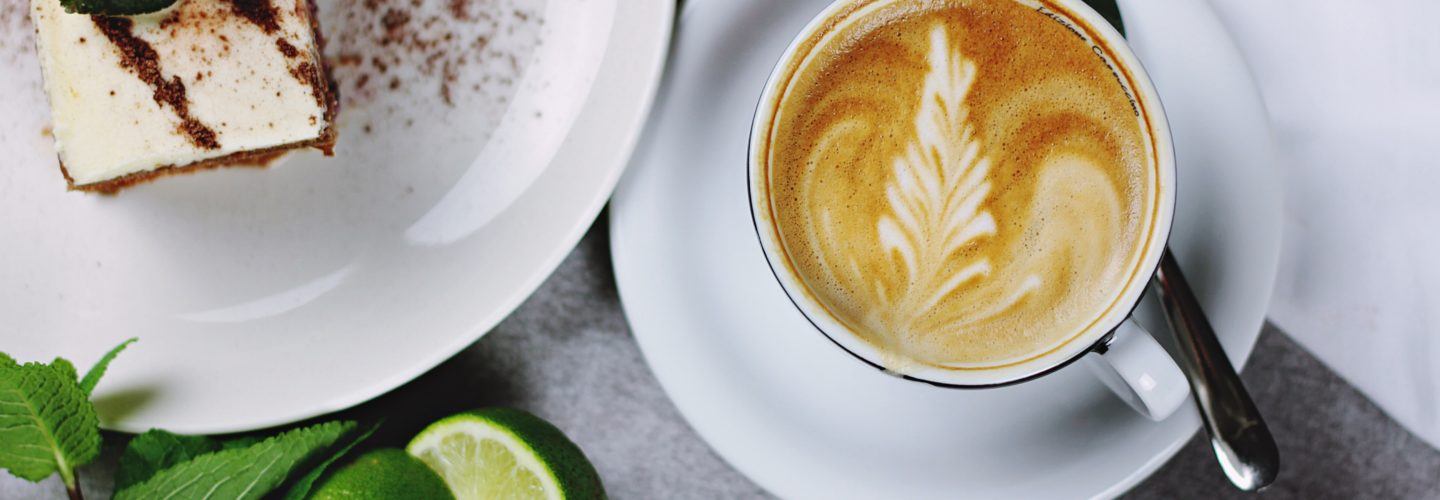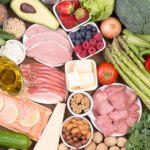This week I had dinner at a great steakhouse in New York with a very good friend. Like any two “normal” guys after a long day, all we could talk about was science, and on this particular night the topic du jour was NAFLD (non-alcoholic fatty liver disease for the non-cognoscenti). We ate, we drank, and we shook our heads in disbelief at the thought of 7 million children in the United States being afflicted with NAFLD. In the next few years NAFLD will become the number one indication for liver transplantation (not a typo).
After dinner, my friend, who I dine with almost every time I’m in NYC, made a comment about how many vegetables and how much fruit I consumed.
I had the following: a chopped salad, tuna tartare, a 12 oz filet; and we split an order of sautéed onions, brussels sprouts, and a bowl of berries.
He asked, “How are you able to stay in ketosis with all of those carbs?” I responded, basically, that for the past few months I have not been consistently in ketosis, and when I am it’s only following a long bike ride where my BHB levels may get back into the 2-3 mM range. Most days, however, I live in the 0.3 to 0.8 mM range, depending on the time of day. (In my mind, to reap the benefits of nutritional ketosis, one probably needs to consistently be in the 1-3 mM range, and for some “applications” 3-4 mM is probably ideal.)
So what gives, you may be thinking. Is Peter Attia not Mr. Ketosis? Well, my friend suggested it might be time for another one of the dreaded what-do-I-eat posts.
Anyone who knows me or who has read this blog for a while will appreciate the fact that I loathe talking about what I eat. Why? Because, it unfortunately gets interpreted by many as what they should eat. It’s like asking me what exercises I do, and inferring you should do the same. It doesn’t make sense. I have specific genetic factors, epigenetic alterations, and goals. These factors coalesce to shape my behavior – how I exercise, what I eat, what I supplement.
A little backstory first
In September of last year, for my wife’s birthday, we went to our favorite restaurant in San Diego, where we live. The day before I emailed the owner and general manager, both friends, and asked for them to have one of our favorite off-menu items on hand (the best sushi in San Diego). They happily obliged and asked which of their desserts my wife would most like. I said something to the effect of: well, they are all great, so you pick.
The next evening, after eating more sushi and sashimi than I could imagine (I ate 3 platters myself), they brought out a platter with a full size serving of each of their signature SIX desserts, each with a lit candle. We sang Happy Birthday, blew out the candles, and my daughter and wife, themselves already stuffed, proceeded to have a small forkful of each of the six desserts. My daughter said, “Daddy, these are so yummy! Why don’t you have a bite?” To which my wife echoed, “Yea, they really are ridiculous…”
And in that instant, I made a decision. I did something I had not done in 4 years (to the month, actually). The decision was this: about 3 or 4 times a year (I opted for my wife’s and daughter’s birthdays, Thanksgiving, and maybe something else), I would – for one meal – eat whatever the hell I wanted.
In the next 15 minutes I devoured the remaining 4/5-ths of EACH of the six culinary masterpieces in front of me. From cheesecake, to carrot cake, to decadent ice cream, and stuff I didn’t even recognize, I ate it. In an instant I felt both wonderful and horrible. The look on my wife’s and daughter’s faces – alone – was worth it. Their jaws on the table the whole time. The taste was beyond what I remembered (actually, much sweeter than I remembered, probably because when you don’t eat sugar for 4 years, well, you know).
I could barely get up from the table. That night, when we got home, I had a horrible headache. 1,000 mg of Tylenol and 2 glasses of water later, I still couldn’t sleep. I eventually got a few winks of sleep. The next day I felt hung over – a feeling I had not experienced since my 26th birthday. My fasting glucose was 126 mg/dL and BHB was 0.2 mM. Clearly I was out of ketosis.
I decided to go out for a glycogen-depleting workout (multiple sets of 3 min all out intervals on the bike) and about 36 hours later, after resuming my normal diet, I was right back into ketosis and felt just fine. I told my wife I was going to repeat this experience on Thanksgiving. As such, and despite how far in advance this was, I asked her to plan to make an extra bowl of my favorite Thanksgiving dish – candied sweet potatoes – baked sweet potatoes coated in melted marshmallows.
Thanksgiving came and went, and I repeated the same act of debauchery during the big feast. Sure enough, by the Sunday morning of Thanksgiving weekend, I felt back to my baseline. I haven’t gone on a bender like that since, but I’m probably due for one.
I’m sure at least some of you are asking, “Does Peter still think sugar is metabolically deranging?” The answer is absolutely, at the levels it is consumed by most Americans. If you want a refresher on my point of view on sugar, definitely give this post a re-read.
So what did I take away from this?
Somewhere between “every day” and “never” there is a tolerance I have developed to consume massive amounts of carbohydrates, and specifically sugar. Now, there are two components to this: a purely physiologic one and a behavioral one (which I suspect is heavily influenced by my physiology).
Focusing just on the physiology, I would guess I could probably “tolerate” a binge like that every few weeks with little measurable or discernable adverse effect. I won’t even attempt to argue whether it’s every 7 days, every 14 days, or every 30 days. But, it’s probably somewhere in that vicinity.
What about the behavioral side? Well, I suspect there exists a different “frequency distribution function” that describes how often I could binge like this without resuming unhealthy eating habits in the long run. If I had to guess, I think the threshold for recidivism is higher from the behavioral tipping point than it is for the physiologic one. In other words, habits matter. I can probably tolerate – physiologically – more sugar today than I can tolerate behaviorally.
One last point I’d be remiss to leave out. You should keep in mind that for a period of 4 years, my consumption of sugar (sucrose, HFCS, liquid fructose in the form of any beverage, etc.) has been less than about 5 grams per day. The average American, depending on which stats you believe (I think they are all pretty weak), consumes somewhere in the neighborhood of 100 to 120 grams per day of sugar, NOT including the liquid fructose in juice!
So, I have to at least entertain the hypothesis that 4 years of avoiding sugar has been a sufficient enough period of time to offer me some sort of “metabolic reset.” Now, I have no intention of testing this. If I was once susceptible to insulin resistance, I’m pretty sure I will always be. But, an interesting Gedankenexperiment would have me going back to one of several different dietary patterns – vegan, but with no sugar; standard American diet with lots of sugar; modestly higher carb, but still sugar-restricted – all could offer insights into the physiology of adiposity and fuel partitioning in my metabolically reset condition.
How has this shaped my current eating behavior?
Sometime early in the New Year, I started really craving more vegetables. I’ve always loved them. Even in ketosis I still ate one or two salads each day most days, but I was pretty restrictive about the quantity of vegetables that had much carbohydrate in them (e.g., tomatoes, carrots). But now, I wanted even more. Big heaping bowls of curry stir-fry. (I have to toot my horn on this one thing. I make a really good, creamy, spicy curry stir-fry.) I realized this would probably knock me out of ketosis, especially with the large amount of tofu I mix with it and the yogurt I use to make the sauce.
My lunchtime salads were getting bigger and bigger, and I was piling more and more “stuff” into them. Almost laughable by the standards of those around me.
And I noticed I was eating less meat. Not at all by “design,” but somehow by seemingly craving less. It seemed an average week would have maybe 2 servings of red meat. When a great steak is placed in front of me, believe me, I enjoy every bite, but I found I just wanted it less. I also started craving a bit more fruit, especially berries and even apples, the former I consumed in modest amounts in ketosis, the latter I did not at all. (Because I know someone will ask – do I think red meat is harmful? – the answer is no, I do not believe so. Certainly not based on evidence I’ve seen to date, including the recent story about protein. For those looking to brush up on the state of evidence implicating red meat, I’d recommend three posts – one I wrote many moons ago in response to one of the dozen epidemiology stories, one written by Chris Masterjohn in response to the TMAO data, and one recently by Zoe Harcombe in response to the protein epidemiology).
I don’t know what to make of this, of course, and it may be nothing at all, other than an evolution of preference. I’ve checked mineral levels in my body in search of a clue (none showed up). Maybe I’m over- or under-saturated in some key nutrient?
Now, since everyone seems to care how much carbohydrate I consume, here is my current framework. I put carbohydrates into 5 essentially MECE categories:
- Those I consume daily – mostly salad stuff and other vegetables; about twice a week I make a curry stir fry with tofu, for example.
- Those I consume often – nuts, berries, almond butter (which I just spoon out of the jar), super starch (both as a meal replacement and post-workout drink).
- Those I consume intermittently – a couple spoons of rice here and there, especially when I make Indian food or when we have sushi; a piece of baked potato when it looks particularly appetizing. If my daughter “makes” spaghetti, which she loves, I’ll usually have a forkful to remind her that her dad is not a complete freak.
- Those I consume only on very special occasions – exceptional desserts, for example – about 2 or 3 times a year, like the ones I consumed on my wife’s birthday, or the candied yams. (NB: One thing I decided in an instant – if I’m going on a bender, it’s not going to be for “average” dessert like some lame birthday cake; it’s got to be best in class.)
- Those I still completely refrain from – I call these the “cheap” carbs – basically all else (including cookies, potato chips, cereals, and the candy bars they keep handing me on this flight as I type this), including any liquid form of fructose, such as juice or sports drinks.
Below is a “typical” 5 days of eating over the past few months. Keep in mind, I virtually never consume breakfast, maybe once a month (e.g., if I have a breakfast meeting). Essentially, I do all of my exercise (current routine, below) in a fasted state only consuming the BioSteel’s high performance sports drink (HPSD), which contains virtually no calories – maybe 8 kcal of BCAA per serving. So, despite the dietary changes I’ve made, and the fact that I’m not in ketosis most of the time, I remain seemingly well fat adapted, though RQ is a bit higher than before.
I should point out that I spend much less time exercising than I have historically, due to time constraints. But, I still aim for the following schedule, which is interrupted by travel during at least 2 or 3 weeks each month. The schedule below amounts to about 14 to 16 hours per week of training.
Monday – high intensity lift, followed by swim
Tuesday – ride (tempo)
Wednesday – swim
Thursday – ride (TT practice or threshold)
Friday – high intensity lift
Saturday – ride (VO2 max intervals), followed by swim
Sunday – group ride or solo TT practice
I can’t believe I’m about to do this…I just have this horrible feeling someone is going to attempt to replicate this, bite-for-bite, for no good reason. Please refrain. Remember, this is what I eat because of how my body works.
Wednesday
Lunch – huge salad (bowl larger than my head) with romaine lettuce, kale, carrots, tomatoes, cucumbers, olives, mushrooms, chicken breast, 2 tbsp olive oil, 3 tbsp lemon juice, 1 tbsp white vinegar, 1 cup of almond slivers
Snack – a cup of macadamia nuts
Dinner – Another large salad, but no chicken or nuts in this one; 1 pound of salmon; bowl of berries to follow
Thursday
Lunch – huge salad (bowl larger than my head) with romaine lettuce, kale, carrots, tomatoes, cucumbers, olives, mushrooms, can of tuna, 2 tbsp olive oil, 3 tbsp lemon juice, 1 tbsp white vinegar, 1 cup of walnuts
Snack – 2 or 3 tbsp of almond butter (a zero sugar variety)
Dinner – Omelet made from 6 eggs (white + yellow), shredded cheddar, lots of other veggies; side of steamed broccoli in butter; 2 more spoons of almond butter after dinner
Friday
Lunch – same as Wednesday (I basically rotate salad back and forth about 3:1 in favor of chicken over tuna)
Snack – none
Dinner – Curry stir-fry containing tofu, carrots, broccoli, bell peppers, mushrooms, zucchini, and squash, in a sauce made from curry paste and Greek yogurt. I typically consume two heaping plates of this.
Saturday (post ride and swim)
Lunch – 7 hardboiled eggs, an avocado, 2 oz of cheese
Snack – a Fuji apple covered in almond butter
Dinner – 8 oz of steak (fillet, rib-eye, or tri-tip), 8 oz of salmon, large salad (sans meat and nuts, which I only do with lunch salads).
Sunday (post longer ride)
Lunch – The “Peter Kaufman” super starch shake (heavy cream, zero-sugar almond milk, a package of chocolate super starch, 2 tbsp of almond butter, an extra 20 g of Biosteel whey protein, frozen strawberries, ice – blend to a thick shake); I’ll drink 2 liters of this. Literally.
Snack – none
Dinner – Family sushi night! I’ll have a seaweed salad or two, huge platter of sashimi, California roll, and another specialty roll.
Lastly, because I know someone will ask, the few times I now take to measure, record, and tabulate exactly what I consume, it works out to about 3,500 kcal per day. But some days, especially when I travel, it can be as low as 2,000 kcal when I only consume one meal per day (dinner). Other days it can be as high as 5,000 kcal. But, 3,300 to 3,600 kcal per day is the typical range.
So, there you have it – the most irrelevant information you’re likely to find on this blog (except for what’s below… this is actually valuable stuff!)
Fashion tip of the month
While in NYC I realized – about 15 minutes before leaving my hotel for a very important meeting – that I had forgotten to bring cufflinks. My heart sank. I’ve never made this mistake before. I immediately realized why. While packing, and just about as I was going to grab a set, my phone rang and I was distracted. But that was neither here nor there. What was I going to do? I didn’t have time to buy a new set, and the hotel concierge didn’t have a set to lend me, so I grabbed some dental floss and tied the cuffs of my shirt together using precise surgical knots. I was pretty self-conscious that someone would notice and ask or comment, especially on a day stacked with so many back-to-back important meetings. Amazingly, no one said anything, though I could see some people looking at them and doing the double-take. Over that lovely steak dinner I alluded to at the top of this post, I told this story to my friend (who snapped the picture, below). His response? “Yea, I noticed it right away. I thought it was a new style. Very cool, actually. Kind of European.” So there you have it. Don’t say I never shared anything of value on this blog.
Photo by Toa Heftiba on Unsplash







728 Comments